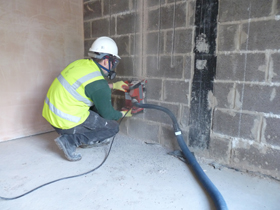 New research tapping into the public’s energy saving attitudes and behaviours has been revealed by the Energy Saving Trust (EST) in the first of a series of public opinion trackers known as the UK Pulse.
New research tapping into the public’s energy saving attitudes and behaviours has been revealed by the Energy Saving Trust (EST) in the first of a series of public opinion trackers known as the UK Pulse.
The findings from the Ipsos MORI survey of over 2,000 UK respondents show nearly half of householders (44%) claim to live in homes with draught problems, 38% in homes with condensation problems and 29% in homes with mould. All three issues were even higher among renters.
However, home owners with these problems are the most likely to be taking action with nearly a quarter of homeowners (24%) living in draughty homes planning to install energy efficiency upgrades in the next year, compared with 12% of homeowners overall.
Home renewables, such as solar panels, were considered to be the “ideal” energy efficiency improvement if money and hassle were no object, with most respondents putting this ahead of wall and loft insulation and draught excluders, despite often living in homes with draught problems.
EST estimates UK households could save a colossal £5 billion a year through making simple changes to their energy use and investing in home renewables. It states that installing solar panels to south facing detached and semi-detached homes would save over £3 billion a year.
David Weatherall, energy efficiency expert at EST, said:
“Our homes are in better shape than a decade ago. Millions of cavity walls have been insulated in recent years and virtually no totally uninsulated lofts remain.
“We’ve now got to address leaky homes, encourage more people with suitable homes to invest in renewables and get people thinking about how, when and where they use energy. The bottom line is home owners will benefit from improving their property’s energy performance.
“The research shows that living in cold, draughty and damp homes is a big motivator for people to take action and that renewable technology is the thing that most excites.
“If UK households are considering making energy saving improvements to their home then now is the time to take action in preparation for the winter months and colder temperatures.”
Other findings from the UK Pulse research showed:
- A divide between the genders with men preferring to install domestic renewables (28%) but women opting for double-glazing as their number one measure for the home (22%)
- Sixty per cent would be interested in installing a renewable energy system for their home if they received income and savings of between £750 and £1,500 a year, which is what many homes could expect through installing solar panels through the Feed-in Tariff (FiT) scheme or renewable heat technologies, such as heat pumps, through the domestic Renewable Heat Incentive (RHI)
- Fifty-nine per cent said they would be more likely to consider buying or renting a home that have renewable energy systems installed compared to one that doesn’t (six per cent)
- Despite this broad interest in domestic renewables, 55% were unable to correctly identify what the FiT scheme for solar panels is, while 83% were unable to correctly identify the recently launched RHI
EST advised householders to look into the savings and income for renewable technology. While the FiT for electricity generating solar PV panels is going down, the cost of solar panels is also going down which means that now could be a great time to invest in solar PV. A typical 4kWP panel could generate and save households around £750 per year. Despite costs falling over the last year, they do vary between installers and system sizes (costs can be between £6,000 and £7,400), so we recommend getting quotes from at least three Microgeneration Certification Scheme accredited installers.
It’s also worth exploring renewable heating technologies, such as heat pumps, following the announcement of financial incentives through the RHI. Not only will households benefit from energy savings, but they will also receive additional income for the energy produced.
 The Health and Safety Executive (HSE) has revealed that construction workers are at a high risk from breathing in dust.
The Health and Safety Executive (HSE) has revealed that construction workers are at a high risk from breathing in dust. 




